Related Research Articles

Major depressive disorder (MDD), also known as clinical depression, is a mental disorder characterized by at least two weeks of pervasive low mood, low self-esteem, and loss of interest or pleasure in normally enjoyable activities. Introduced by a group of US clinicians in the mid-1970s, the term was adopted by the American Psychiatric Association for this symptom cluster under mood disorders in the 1980 version of the Diagnostic and Statistical Manual of Mental Disorders (DSM-III), and has become widely used since.
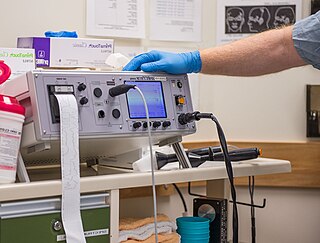
Electroconvulsive therapy (ECT) or electroshock therapy (EST) is a psychiatric treatment where a generalized seizure is electrically induced to manage refractory mental disorders. Typically, 70 to 120 volts are applied externally to the patient's head, resulting in approximately 800 milliamperes of direct current passing between the electrodes, for a duration of 100 milliseconds to 6 seconds, either from temple to temple or from front to back of one side of the head. However, only about 1% of the electrical current crosses the bony skull into the brain because skull impedance is about 100 times higher than skin impedance.

Transcranial magnetic stimulation (TMS) is a noninvasive form of brain stimulation in which a changing magnetic field is used to induce an electric current at a specific area of the brain through electromagnetic induction. An electric pulse generator, or stimulator, is connected to a magnetic coil connected to the scalp. The stimulator generates a changing electric current within the coil which creates a varying magnetic field, inducing a current within a region in the brain itself.
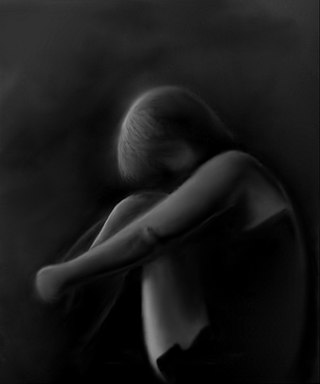
Psychotic depression, also known as depressive psychosis, is a major depressive episode that is accompanied by psychotic symptoms. It can occur in the context of bipolar disorder or major depressive disorder. It can be difficult to distinguish from schizoaffective disorder, a diagnosis that requires the presence of psychotic symptoms for at least two weeks without any mood symptoms present. Unipolar psychotic depression requires that psychotic symptoms occur during severe depressive episodes, although residual psychotic symptoms may also be present in between episodes. Diagnosis using the DSM-5 involves meeting the criteria for a major depressive episode, along with the criteria for "mood-congruent or mood-incongruent psychotic features" specifier.

Brodmann area 25 (BA25) is the subgenual area, area subgenualis or subgenual cingulate area in the cerebral cortex of the brain and delineated based on its cytoarchitectonic characteristics.
Bioelectromagnetics, also known as bioelectromagnetism, is the study of the interaction between electromagnetic fields and biological entities. Areas of study include electromagnetic fields produced by living cells, tissues or organisms, the effects of man-made sources of electromagnetic fields like mobile phones, and the application of electromagnetic radiation toward therapies for the treatment of various conditions.
Treatment-resistant depression (TRD) is a term used in psychiatry to describe people with major depressive disorder (MDD) who do not respond adequately to a course of appropriate antidepressant medication within a certain time. Definitions of treatment-resistant depression vary, and they do not include a resistance to psychotherapy. Inadequate response has most commonly been defined as less than 50% reduction in depressive symptoms following treatment with at least one antidepressant medication, although definitions vary widely. Some other factors that may contribute to inadequate treatment are: a history of repeated or severe adverse childhood experiences, early discontinuation of treatment, insufficient dosage of medication, patient noncompliance, misdiagnosis, cognitive impairment, low income and other socio-economic variables, and concurrent medical conditions, including comorbid psychiatric disorders. Cases of treatment-resistant depression may also be referred to by which medications people with treatment-resistant depression are resistant to. In treatment-resistant depression adding further treatments such as psychotherapy, lithium, or aripiprazole is weakly supported as of 2019.

Transcranial direct current stimulation (tDCS) is a form of neuromodulation that uses constant, low direct current delivered via electrodes on the head. It was originally developed to help patients with brain injuries or neuropsychiatric conditions such as major depressive disorder. It can be contrasted with cranial electrotherapy stimulation, which generally uses alternating current the same way, as well as transcranial magnetic stimulation.
Subcortical ischemic depression, also known as vascular depression, is a medical condition most commonly seen in older people with major depressive disorder. Subcortical ischemic depression refers to vascular depression specifically due to lesions and restricted blood flow, known as ischemia, in certain parts of the brain. However, the disorder is typically described as vascular depression in the literature.
Neuronetics is a Malvern, PA based, publicly traded company incorporated in Delaware in April 2003, that develops non-invasive treatments for psychiatric disorders that have shown resistance or lack of improvement using traditional medicine. The treatments are based upon neuromodulation technology.
Endogenous depression(melancholia) is an atypical subclass of major depressive disorder. It could be caused by genetic and biological factors. Endogenous depression occurs due to the presence of an internal stressor instead of an external stressor. Endogenous depression includes patients with treatment-resistant, non-psychotic, major depressive disorder, characterized by abnormal behavior of the endogenous opioid system but not the monoaminergic system. Symptoms vary in severity, type, and frequency and can be attributed to cognitive, social, biological, or environmental factors that result in persistent feelings of sadness and distress. Since symptoms are due to a biological phenomenon, prevalence rates tend to be higher in older adults. Due to this fact, biological-focused treatment plans are often used in therapy to ensure the best prognosis.
Management of depression is the treatment of depression that may involve a number of different therapies: medications, behavior therapy, psychotherapy, and medical devices.
Magnetic seizure therapy (MST) is a proposed form of electrotherapy and electrical brain stimulation. It is currently being investigated for the treatment of major depressive disorder, treatment-resistant depression (TRD), bipolar depression, schizophrenia and obsessive-compulsive disorder. MST is stated to work by inducing seizures via magnetic fields, in contrast to ECT which does so using alternating electric currents. Additionally, MST works in a more concentrated fashion than ECT, thus able to create a seizure with less of a total electric charge. In contrast to (r)TMS, the stimulation rates are higher resulting in more energy transfer. Currently it is thought that MST works in patients with major depressive disorder by activating the connection between the subgenual anterior cingulate cortex and the parietal cortex.
Late-life depression refers to depression occurring in older adults and has diverse presentations, including as a recurrence of early-onset depression, a new diagnosis of late-onset depression, and a mood disorder resulting from a separate medical condition, substance use, or medication regimen. Research regarding late-life depression often focuses on late-onset depression, which is defined as a major depressive episode occurring for the first time in an older person.
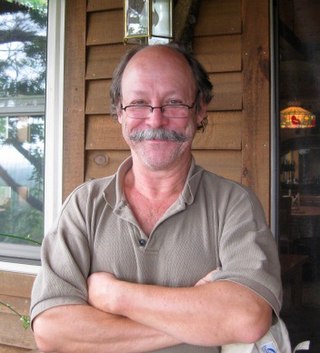
Mark S. George is a Distinguished University Professor of psychiatry, radiology and neurosciences and is the director of the Medical University of South Carolina (MUSC) Center for Advanced Imaging Research as well as the Brain Stimulation Laboratory. As of June 2020, his research has been cited over 47,000 times, with an h-index of 113 and i-10 index of 404.

BrainsWay Ltd. is an international company that is engaged in the development of a medical device that uses H-coil for deep transcranial magnetic stimulation as a non-invasive treatment for depression, OCD, and smoking addiction. The company was founded in 2003 and has offices in the US and Jerusalem.
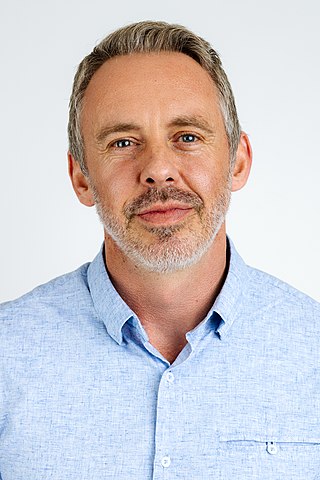
Reid Robison is an American board-certified psychiatrist known primarily for his work with psychedelic medicines. As an early adopter and researcher of the use of ketamine in psychiatry, Robison has made significant contributions to ketamine-assisted psychotherapy (KAP) and other treatment modalities using ketamine for mental health conditions. He previously served as coordinating investigator for a study on MDMA-assisted psychotherapy for eating disorders, sponsored by the Multidisciplinary Association for Psychedelic Studies (MAPS), and he continues to lead research and psychiatric clinical trials involving psychedelics. To date, Robison has guided thousands of ketamine-assisted therapy sessions and Spravato dosing sessions. He currently serves as Medical Director of Center for Change, an eating disorder treatment center in Utah, and Chief Clinical Officer of Numinus, a Vancouver-based mental health company focused on psychedelic research and treatments. Robison is an adjunct professor at both the University of Utah and Brigham Young University.

Abraham Zangen is an Israeli professor of neuroscience, head of the brain stimulation and behavior lab and chair of the psychobiology brain program at Ben-Gurion University of the Negev (BGU).
Non-invasive cerebellar stimulation is the application of non-invasive neurostimulation techniques on the cerebellum to modify its electrical activity. Techniques such as transcranial magnetic stimulation (TMS) or transcranial direct current stimulation (tDCS) can be used. The cerebellum is a high potential target for neuromodulation of neurological and psychiatric disorders due to the high density of neurons in its superficial layer, its electrical properties, and its participation in numerous closed-loop circuits involved in motor, cognitive, and emotional functions.
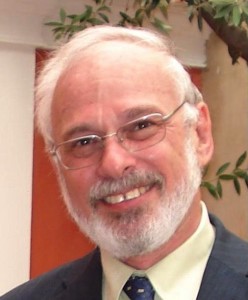
Prof. Robert Haim Belmaker, is an Israeli psychiatrist who has had major academic positions in Israeli psychiatry since 1974. He had a formative influence on biological directions in Israeli psychiatry. He was Hoffer-Vickar Professor of Psychiatry at Ben-Gurion University of the Negev, Beersheva Israel until his retirement and is now Emeritus.
References
- ↑ Riddle, John (March 18, 2019). "Living with Sadness: How Does Sadness Differ from Depression?" . Retrieved May 30, 2019.
- ↑ Todd M. Hutton. U.S. News .
- 1 2 Southern California Transcranial Magnetic Stimulation
- 1 2 Todd Hutton, Karl Lanocha, M.D Richard Bermudes, Kimberly Cress. Transcranial magnetic stimulation: what you need to know.
- 1 2 Antillon, D., Barragan, N., Jenkins J., Hutton J., Hutton. 2018. Clinical Efficacy of Transcranial Magnetic Stimulation for the Treatment of Major Depression in an Outpatient Setting. T. Brain Stimulation, Volume 11, Issue 3, May–June 2018, page e2.
- 1 2 Derstine T, Lanocha K, Wahlstrom C, Hutton TM (November 2010). "Transcranial magnetic stimulation for major depressive disorder: a pragmatic approach to implementing TMS in a clinical practice". Ann Clin Psychiatry. 22 (4 Suppl): S4–11. PMID 21180663.
- 1 2 "Transcranial Magnetic Stimulation for Depression". The Doctors. December 3, 2014. Retrieved May 30, 2019.
- ↑ Segura, Joe (July 29, 2013). "Treatment for patients suffering mental health issues to expand at Community Hospital Long Beach". Whittier Daily News . Retrieved May 30, 2019.
- ↑ Huntington Memorial Hospital.
- ↑ Woolsey, Brittany (October 10, 2013). "Machine finds pulse on new wave of depression treatment". Orange County Register . Retrieved May 30, 2019.
- 1 2 3 "Dr. Todd Hutton Elected as TMS Society President". Southern California TMS Center. June 1, 2018. Retrieved May 30, 2019.
- ↑ Mitchell, Sandra (February 5, 2015). "Treatment Utilizing Magnetic Fields Offers New Hope For Those With Severe Depression". CBS News . Retrieved May 30, 2019.
- ↑ Diller, Nathan (June 1, 2018). "Kanye West Calls Bipolar Disorder His "Superpower" In A New Song & Fans Are Seriously Divided". Bustle. Retrieved May 30, 2019.
- ↑ "The Breakthrough Depression Treatment You've Been Waiting For Is Magnetic — Literally". Woman's Health. September 1, 2017. Retrieved May 30, 2019.
- ↑ Rubin, Linda (April 9, 2012). "TMS Magnetic Therapy Eases Depression and Pain". National Pain Report. Retrieved May 30, 2019.
- ↑ Laxamana, Chris (January 29, 2018). "Dr. Dan Reardon and Dr. Todd Hutton [Episode 312]". Dr. Drew. Retrieved May 30, 2019.
- ↑ Clinical TMS Society.
- ↑ Todd Hutton (Southern California Transcranial Magnetic Stimulation Center)